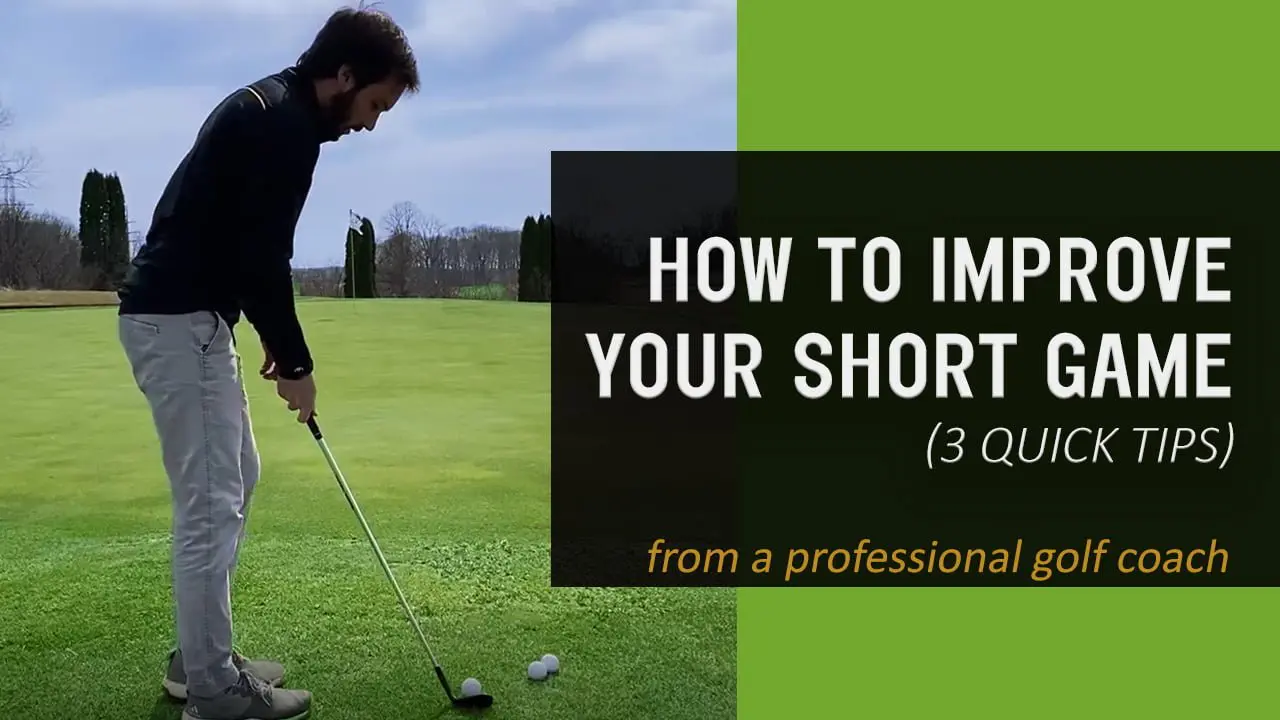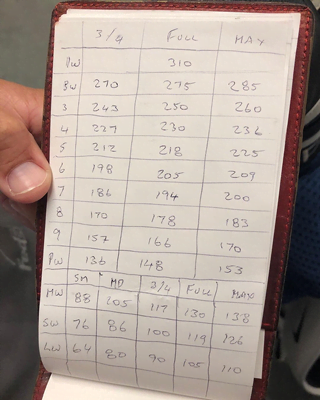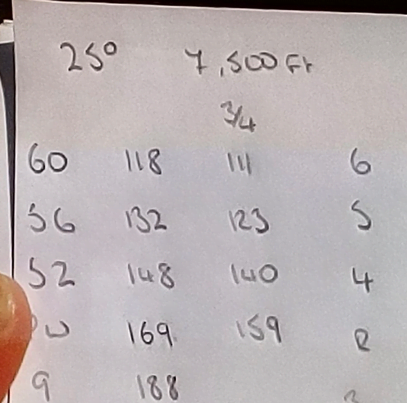
If putting is where the money is, then your short game is the best stock you could have. Improving on your short game in golf and having control of it will not only help you make more up and downs but also free up your iron play. The reason I say this is because you will hit the irons with less pressure knowing that you are capable of saving par if you miss the green.
Here are 3 quick and easy tips that can help improve your short game in golf and lower your scores.
Check out this drill to work on your wedges, distance control and different ball trajectories, and learn more about your wedges in general.
One of the first things we need in order to put the ball close with our wedges is to have options. If you did the drill we provided above and you have three wedges in the bag (gap, sand, lob) you should now have nine different distances.
While doing this drill, pay close attention to the tempo on your swing and try to keep as neutral as possible. When it comes to playing on the course sometimes you might have to swing a little harder if you are hitting into the wind or you are between clubs. But for this specific drill, try to keep the same tempo on all your shots and do it with a neutral speed (whatever tempo feels natural for you).
If you noticed, you not only hit different yardages but also trajectories. For instance, you hit the same or very similar distance with a full lob wedge as you do with a ¾ sand wedge, but the ball does not fly the same, the sand wedge will fly lower.
This distance control drill not only applies to your wedges, but also could be used for irons. To record and keep track of yardages for each club you can us an app on your phone or a good old fashioned notebook.


Again, having different options to go at greens is key to be able to hit the ball closer. It is important to know that you do not always need to be attacking pins, you have to be smart about it, but those ones that you can attack you want to make the best choice.
In the video below, I have shown you two different shots from similar distances, to different pins and using different clubs.
Usually when we have a short pin or we have an obstacle (bunker, hazard, false front) in front of the green, we want the ball to come higher because we do not have a lot of green to work with.
Now, when the pin is back and we have more room, we can hit a lower, more controlled shot where the ball will bounce once or twice and then stop.
There are exceptions to the “rule” and you are not always going to hit lower shots to back pins and high ones to front locations.
One of the most common mistakes for the average golfer is that they pick the wrong club or shot shape and then try to manipulate their swing as they are about to hit.
For example, I see a lot of people that take a very long back swing and then have to slow down their down swing to try and hit their distance they have left.
It is important to have a good tempo but it is not good to slow down your swing when coming down as this will most likely cause you to hit it thin or sometimes heavy.
If we pick the right club and shape, we will not have to manipulate the swing while we are swinging. You probably noticed on the video that my swing was very similar in terms of length and speed and the ball flight was fairly different.
Last but not least, learn how and when to use the "bump and run". Technically the bump and run is probably the easiest shot to hit around a green, but is not one that we can use all the time.
There are courses that will allow you to run the ball towards the pin a lot of times, but there a lot others that will require you to hit higher shots.
One of the most popular mistakes when trying to hit a bump and run is the indecision. What I mean by that is that a lot of times the player has the idea of bump and run maybe because is the easiest shot, but knows that it will be hard to leave the ball close to the hole with a “running” ball. Then the player tries to scoop it to compensate the bad decision.
As I said, the bump and run is an easier shot technically but is not to be used all the time.
Once again, one more option to add to your bag when it comes to saving par, you need to win against your friends, or to make your first birdie ever after you got it close in two on a par 5.
The bump and run is the shot we are going to use when we are super close to the green but we have a lot of green between our ball and the pin.
The good thing about this shot is that you can use a lot of different clubs. On the video we used a 50-degree wedge and a 9 iron, but you can go all the way to a 7-6 iron if that works better for you.
The technique is always going to be very similar and you will just adjust the length and speed of your swing.
This type of shot is very similar to putting, the arms stay pretty “dead” during the swing and all we need to focus on is on rotating back and forward without using our wrists. Some people even like to use the same grip they use while putting.
Remember always to take a look at the green before executing, since it is like putting, the break of the green is going to affect the shot more than a shot that flies to the pin.
In conclusion, when it comes to your short game, having different options is going to make you a better player. If all we can do is hit a sand wedge with the same height all the time, we are very limited and not only are we not going to hit it close to save pars, but we are going to put a lot of pressure on the irons, because in the back of our mind we know that if we miss the green, the chances of saving par are slim. Some of the best short game players on the PGA Tour are also some of the best short game players, Justin Thomas, for example.
The cool part about the short game is that different people use different clubs to make shots and that is totally fine as long as you know your game and the options in “your bag”. Severiano Ballesteros used to say "it does not matter how, only how many" and when it comes to having options and different shots, he was the KING.
Being in the golf ball business, we would like to add that playing a ball consistently will also help improve your game in all areas. If we play with the same type of ball or at least similar all the time, we are going to learn how much spin we put on the ball, and then understand where we need to bounce our approach shots, knowing how the ball is going to react with the different shots we hit.
Got any questions, feedback or short game tips of your own to share? Let us know in the comments.
Valuable information